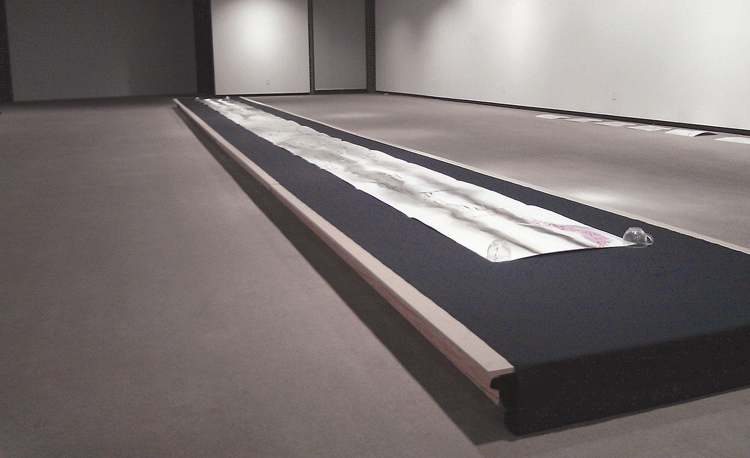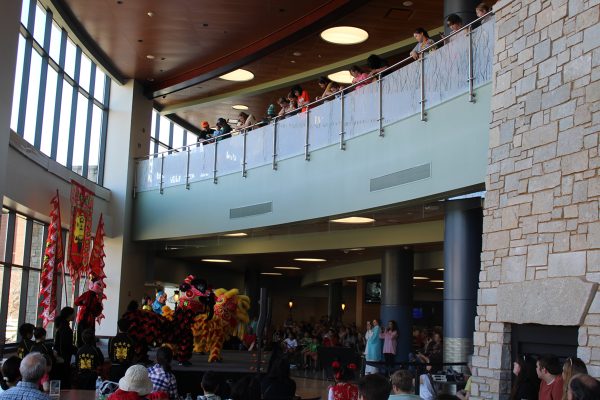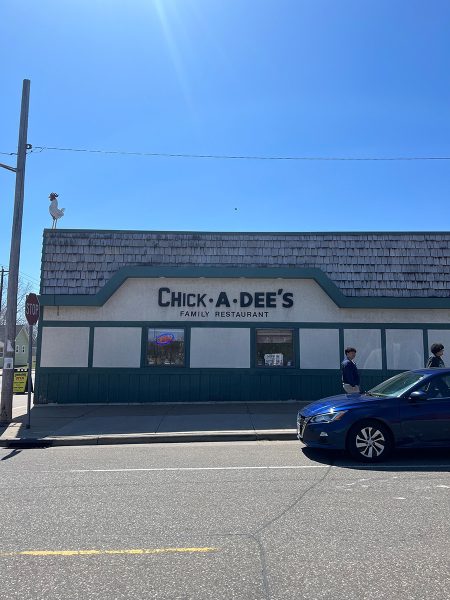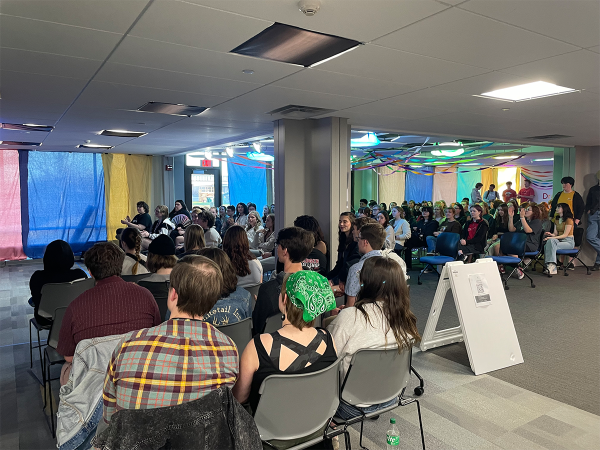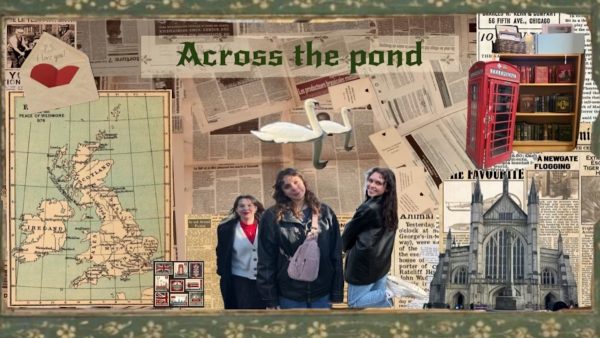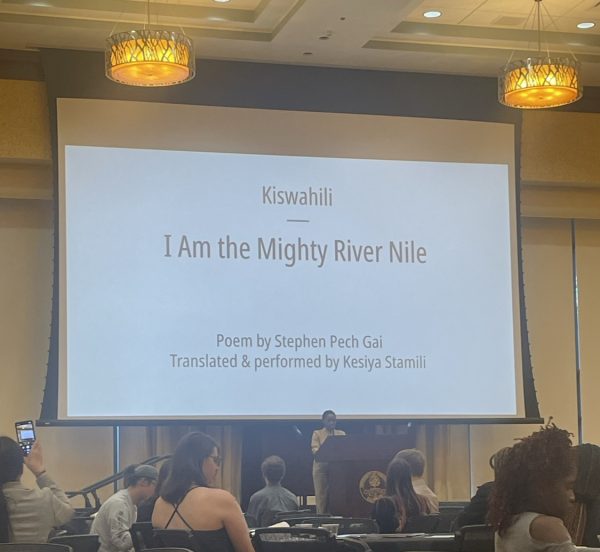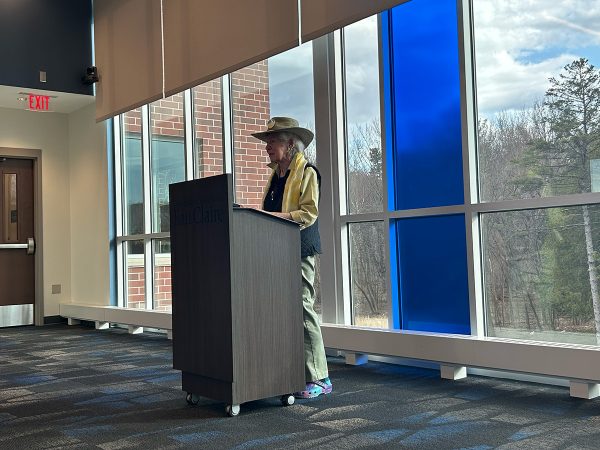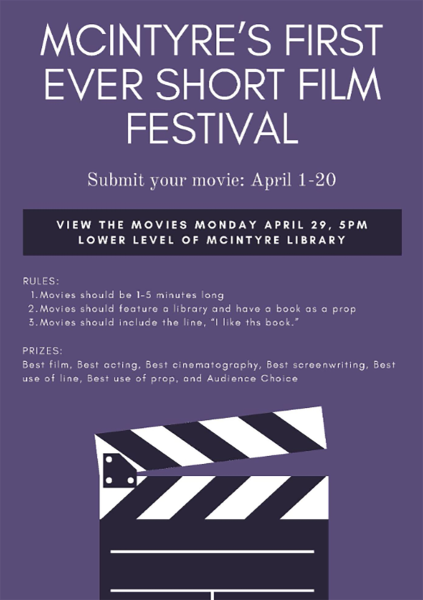Art comes in all forms
Two new unique exhibits now on display in Foster Art Gallery
The Foster Art Gallery’s Shading Exhibit pairs two art forms: art and music. Musicians subjectively interpret the sheet music. © 2014 Elizabeth Jackson
February 26, 2014
From music interpreted through art to woodtype and printing, the Foster Art Gallery has two very different exhibits on display.
Woodtype and printing were the first tools used in letterpress printing in the great information revolution. Founded in 1880, the Hamilton Type Company, located in Two Rivers became the largest manufacturer of this type of production in the U.S.
The other exhibit, called Shading, by Australian artist Catherine Schieve, creates a type of hieroglyphics approach to a musical score in a forty-foot painting that can be read many ways.
“With the new methods, woodtype starting falling out of favor, it has become less of a mainstream, and more of an art type venue,” said Tom Wagner, Foster Art Gallery director. “So now we see people are using woodtype in more artistic ways.”
Wagner said when the Hamilton Woodtype Company closed, a group of people who did not want to see all the material go in a landfill, established the Hamilton Woodtype and Printing Museum in Two Rivers.
“Our print making professor, Sandra Starck, was interested in showing students the historical and artistic way to using movable woodtype,” Wagner said.
Wagner said through this display, they hope graphic designer students, who use typography often, would be able to gain knowledge on the history of typography and the different ways it can be used.
The other exhibit, Shadings, was something Tim Lane, professor of music, was very interested in. He had worked with Schieve on a project a couple years ago and knew of her work.
Lane said the initial learning curve of the piece is steep and he worked with students for a while so they could get the hang of it. He said it may be easier for a less experienced musician to play the piece because they don’t have any preconceived notions about what it technically should sound like.
“If you aren’t a previous participant in a tradition, it’s easy to learn new ideas, and you still may have assumptions but they aren’t as layered or engrained,” Lang said.
The Shading exhibit is something very unique to the gallery, Wagner said.
“This is really the first time since I have been here that we have done something like this,” Wagner said. “At the opening reception, Tim and some students preformed the painting. They had to learn what these different symbols meant.”
Wagner said music and art go together, especially when paired with each other.
“When you put ear buds on, and you are working, you tend to get a rhythm going, and things enter into your mind,” Wagner said. “When you are in art you start kind of developing this mindset and maybe what you are hearing is subconsciously flowing through your pen or your paintbrush onto the paper.”
UW-Eau Claire sophomore Danielle Graf, who plays the flute, was one of the students who performed the musical score.
“It was very introspective,” Graf said. ”You kind of needed to get into your zone, I found that each time I re-read it, I would learn a little bit more and learn on my instrument what I can do because it’s not a typical sound, typical notation.”
She said any instrument can interpret the score and it is not limited to any sound.
“There are so many things at once to focus on,” Graf said. “It can be practically read in any way as long as it has a direction, there are so many things to think about and ways to shape the sound based on what you see on the score, you can’t play a right note, you can’t play a wrong note.”
Blank said the Shading gallery will post a signup sheet for student musicians.

